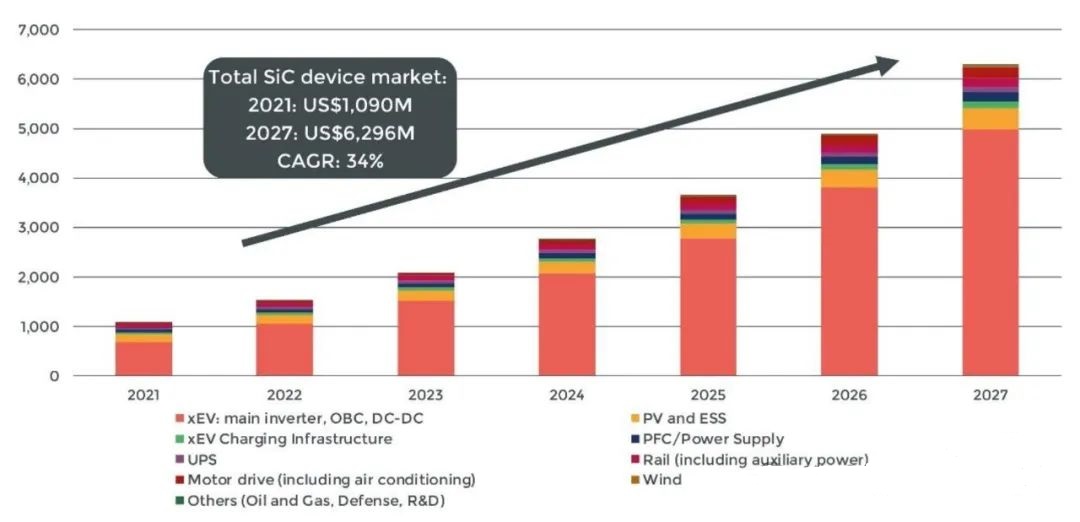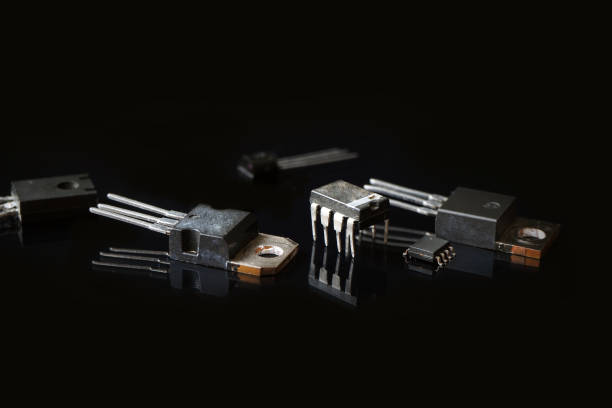Market Overview
With rising efficiency requirements in new energy vehicles, photovoltaic systems, and charging stations, the power semiconductor market is entering a period of rapid growth.
SiC power device market size:

Source: Power SiC report, Yole Intelligence, 2022
The SiC market is still led by overseas firms. Market share rankings include STMicroelectronics, Infineon, Wolfspeed, ROHM, ON Semiconductor, and Mitsubishi Electric.
Adoption in Electric Vehicles and Inverters
Tesla was the first automaker to use SiC in vehicle inverters. In 2018, Tesla replaced IGBTs with SiC devices in the Model 3.
Conductive SiC is primarily used in inverters to produce power devices. Inverters convert battery DC into the AC needed by motors. In traditional Si-based IGBT inverters, IGBTs are switched by square-wave drive signals so that the DC is converted into a high-voltage square wave, which is then shaped or filtered to form a sine-wave AC output.
Because output voltage and frequency can be freely controlled, inverters are widely used to control AC motors and brushless motors.
SiC Substrates and GaN Integration
Semi-insulating SiC substrates are mainly used to manufacture GaN RF devices. By growing GaN epitaxial layers on semi-insulating SiC substrates, SiC-based GaN epiwafers can be produced.
Material Properties of Silicon Carbide
Silicon carbide (SiC) is a compound semiconductor formed from silicon and carbon. It is a suitable material for high-temperature, high-frequency, high-power, and high-voltage devices.
Compared with traditional silicon, SiC has a bandgap approximately three times wider, thermal conductivity four to five times higher, breakdown voltage eight to ten times greater, and saturated electron drift velocity two to three times that of silicon.
Core Advantages of SiC Devices
- High-voltage capability: Lower on-resistance and a wider bandgap allow SiC devices to withstand higher currents and voltages, enabling more compact designs and higher efficiency.
- High-frequency performance: SiC devices do not exhibit the current tail observed in Si IGBTs during turn-off, enabling much faster switching speeds (approximately 3 to 10 times that of Si devices) and operation at higher frequencies.
- High-temperature operation: Higher thermal conductivity allows SiC devices to operate at elevated temperatures compared with silicon.
Outlook
Wide-bandgap semiconductors such as SiC and GaN offer advantages for high-efficiency energy conversion, miniaturization, and lower system cost. SiC MOSFETs demonstrate performance advantages over traditional Si-based devices in many areas. Reliability and cost remain the central factors for broader commercialization.
 ALLPCB
ALLPCB






